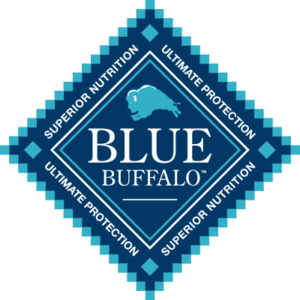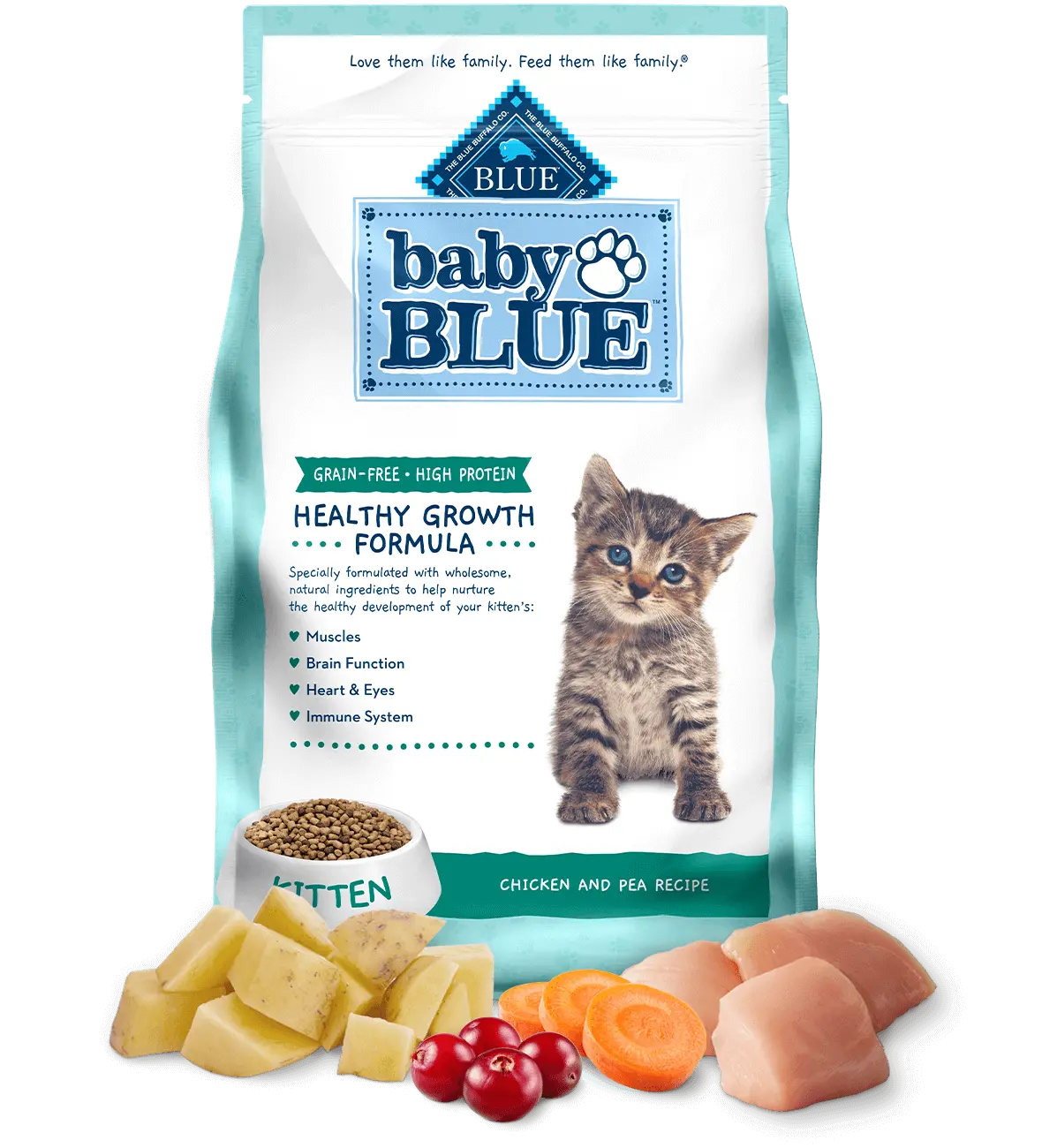Baby BLUE - Kitten - High-Protein, Grain-Free Chicken and Pea Recipe
Kitten
Regular
Indoor and Outdoor
Grain-Free

Blue Buffalo
Baby BLUE - Kitten - High-Protein, Grain-Free Chicken and Pea Recipe
Kitten
Regular
Indoor and Outdoor
Grain-Free

Click to reveal the score breakdown
Tap to view ingredients, guaranteed analysis and more
Product Summary
Blue Buffalo Baby BLUE Kitten High-Protein, Grain-Free Chicken and Pea Recipe is designed for kittens, providing a balanced diet to support healthy growth. With deboned chicken as the first ingredient, it offers 40% crude protein, aiding muscle development. It’s grain-free and includes DHA for cognitive development and taurine for heart health. The recipe is enhanced with antioxidants and omega fatty acids for overall well-being.
Pros:
- 40% crude protein from chicken and chicken meal supports muscle growth.
- DHA promotes cognitive development in growing kittens.
- Omega-3 and omega-6 fatty acids improve skin and coat health.
Cons:
- 20% crude fat may be high for less active kittens.
- Limited fiber content (3.5%) might not support optimal digestion in all kittens.
- Grain-free recipes may not suit all kittens, depending on dietary needs.
Ingredients
Deboned Chicken
Chicken Meal
Pea Protein
Tapioca Starch
Menhaden Fish Meal (source of Omega 3 Fatty Acids)
Chicken Fat (preserved with Mixed Tocopherols)
Peas
Dried Egg Product
Flaxseed (source of Omega 6 Fatty Acids)
Natural Flavor
and also:
Fish Oil (source of DHA-Docosahexaenoic Acid and ARA-Arachidonic Acid), Pea Fiber, Calcium Chloride, Choline Chloride, Potassium Sulfate, DL-Methionine, Dehydrated Alfalfa Meal, Potatoes, Dried Chicory Root, Salt, Alfalfa Nutrient Concentrate, Calcium Carbonate, Taurine, Sweet Potatoes, Carrots, Potassium Chloride, preserved with Mixed Tocopherols, Vegetable Juice for color, Blueberries, Cranberries, Barley Grass, Parsley, Turmeric, Dried Kelp, Yucca Schidigera Extract, Dried Yeast, Dried Enterococcus faecium fermentation product, Dried Lactobacillus acidophilus fermentation product, Dried Aspergillus niger fermentation extract, Dried Trichoderma longibrachiatum fermentation extract, Dried Bacillus subtilis fermentation extract, Calcium Iodate, Sodium Selenite, Oil of Rosemary
Notes
The score is calculated after relocation of fresh meat or fish ingredient(s) as explained in the calculation rule #7 in Chapter 1.
Guaranteed Analysis
Crude Protein
40%
Crude Fat
20%
Crude Fiber
3.5%
Moisture
9%
Calcium
1.5%
Phosphorus
1.2%
Magnesium
0.14%
Omega 3
1%
Omega 6
3.5%
Metabolizable Energy
3954 kcal/kg
Notes
The score is calculated after relocation of fresh meat or fish ingredient(s) as explained in the calculation rule #7 in Chapter 1.
Product last updated: October 6, 2024, 12:34 PM
Please hold on while we’re getting the best offers for you
7705





